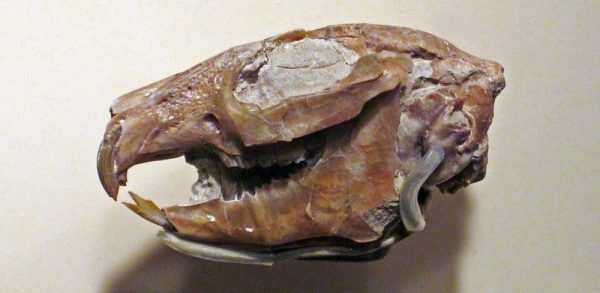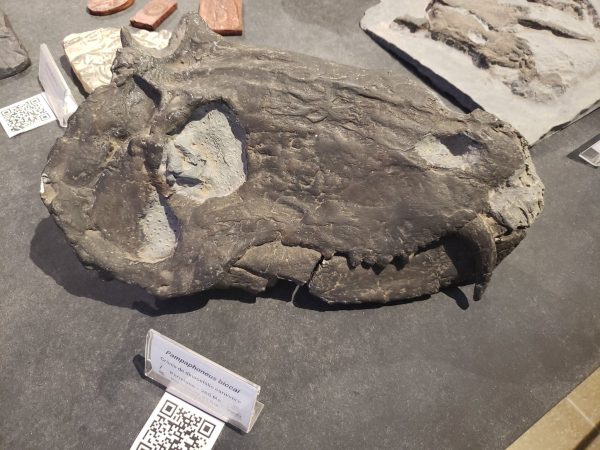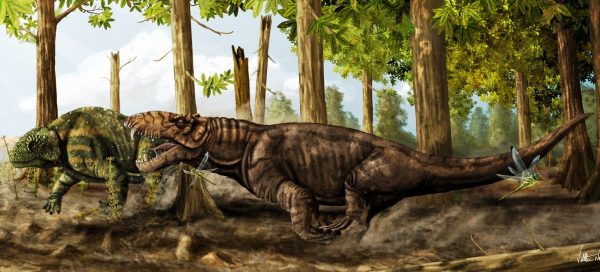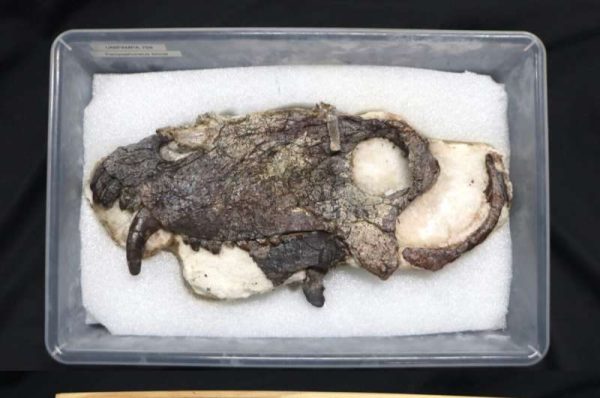A fossilized glimpse into Earth’s ancient past has emerged with the discovery of the largest predator known as Pampaphoneus biccai in the rural region of São Gabriel, Southern Brazil.

This remarkable finding dates back a staggering 265 million years, offering an unparalleled insight into prehistoric ecosystems.
Pampaphoneus belonged to the early therapsid group called dinocephalians, which dominated the land just before the catastrophic extinction event that eradicated 86% of all animal species globally.
The fossil, a treasure trove comprising a complete skull, ribs, and arm bones, stands as a testament to the diligent efforts of paleontologists from the Federal University of Pampa (UNIPAMPA) and the Federal University of Rio Grande do Sul (UFRGS).

This discovery is especially noteworthy as Pampaphoneus specimens are rare outside regions like South Africa and Russia, making it the sole known species of its kind in Brazil.
The significance of this finding extends beyond unveiling the largest predator of its time. Pampaphoneus biccai lived during the Permian period, just before the mass extinction, providing a snapshot of the community structure of terrestrial ecosystems.
The fossilized remains showcase distinctive features, highlighting its role as a formidable predator akin to modern big cats. Large, sharp canine teeth adapted for capturing prey and a robust dentition capable of chewing bones set Pampaphoneus apart.

The meticulous excavation efforts of the paleontologists involved a month of strenuous fieldwork, culminating in the retrieval of this invaluable fossil. The impact of the pandemic, however, delayed the cleaning and study of the fossil by an additional three years.
Despite these challenges, the fossil has finally been revealed, offering insights into an ancient world that predates the most cataclysmic extinction event in Earth’s history.
Professor Stephanie E. Pierce, a co-author of the study and Curator of Vertebrate Paleontology and Mammalogy at Harvard’s Museum of Comparative Zoology, emphasizes the importance of this discovery.

She notes that Pampaphoneus biccai would have invoked sheer dread in any creature crossing its path, and its presence provides a unique opportunity to understand the ecological dynamics before the mass extinction.
The fossilized predator was part of the dinocephalians, characterized by thick skulls, and its discovery is a spectacular find that adds to the global importance of Brazil’s fossil record.
The remains found in Brazil also hint at a potential third specimen, larger than the recent discovery, further enriching our understanding of these prehistoric giants.





